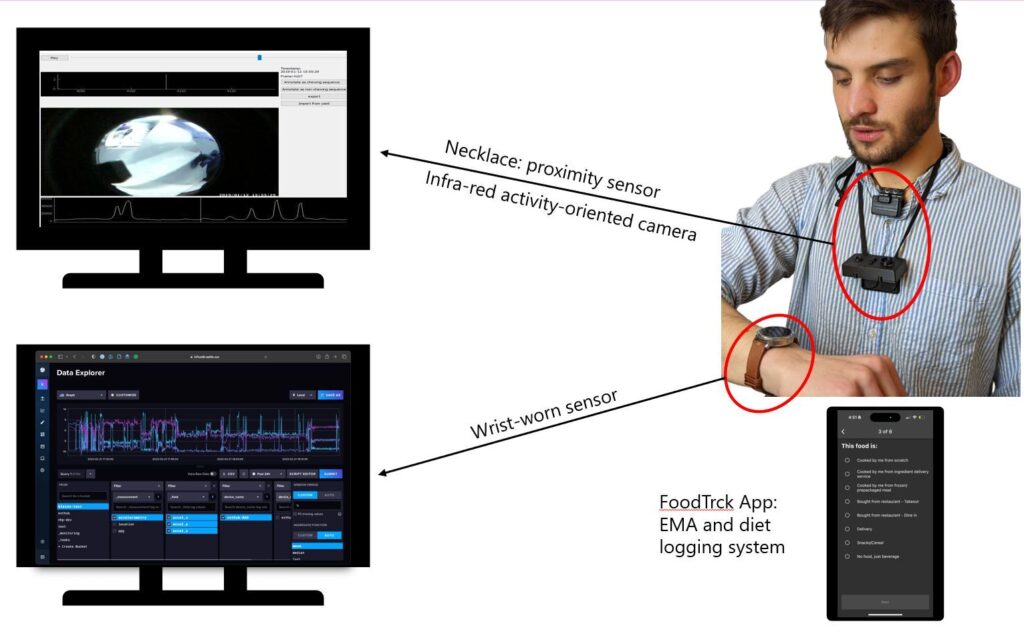Wearable technology could overhaul the treatment of obesity, research suggests, with sensors on a necklace and wristband together with a body camera capturing real-world overeating patterns for treatment.
The tech, outlined in npj Digital Medicine, sets the scene for personalized interventions that can identify the specific drivers of overeating, tailoring treatment accordingly.
The study identified five general patterns of overeating that occurred among the participants, which were triggered by specific behavioral and psychological and contextual factors.
“Overeating is a major contributor to obesity, yet most treatments overlook the unconscious habits that drive it,” said corresponding author Nabil Alshurafa, PhD, from Northwestern University.
The study began with 65 obese adults who wore the sensors and used a smartphone app to track mood and context relating to eating.
Of these, 17 were excluded, mostly due to dropping out, leaving 48 participants among whom five overeating patterns emerged from the thousands of hours of data and video footage recorded.
The advanced technology provided detailed information, precisely and passively recording multiple eating behaviors, detecting when people ate, how fast they chewed, how many bites they took, and how many times their hands move to their mouths.
The NeckSense necklace proximity sensor provided real-time information on chewing, with its algorithm differentiating this from talking. Shifts in ambient light detected gestures, such as taking a bite, while an accelerometer and gyroscope could detect if someone is leaning back to drink or leaning forward to eat.
A nutrition monitor displayed calorie intake over the course of a day, week, and month. In addition, it could break down exactly what the user ate each day and the nutrition related to each meal.
The HabitSense bodycam—a pioneering, patented activity-oriented camera—used thermal sensing so it could automatically censor all video except the hands and face and was triggered only when food entered its field of view. Raw video could be selectively blurred to filter out potentially privacy-sensitive surrounding information.
There was also a wrist-worn device to track activity, like a FitBit or Apple Watch.
The researchers gave the five identified overeating patterns particular titles according to their triggers: Take-out Feasting; Evening Restaurant Reveling; Evening Craving; Uncontrolled Pleasure Eating; and Stress-driven Evening Nibbling.
“What struck me most was how overeating isn’t just about willpower,” said lead author Farzad Shahabi, who is a PhD student in Alshurafa’s lab.
“Using passive sensing, we were able to uncover hidden consumption patterns in people’s real-world behavior that are emotional, behavioral, and contextual.
“Seeing the patterns emerge from the data felt like turning on a light in a room we’ve all been stumbling through for decades.
“Our long-term vision is to move beyond one-size-fits-all solutions and toward a world in which health technology feels less like a prescription and more like a partnership.”

